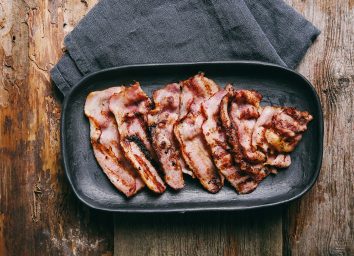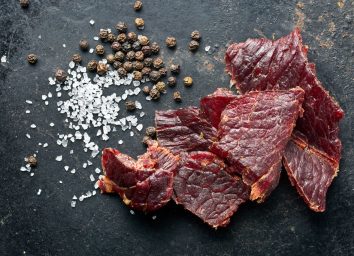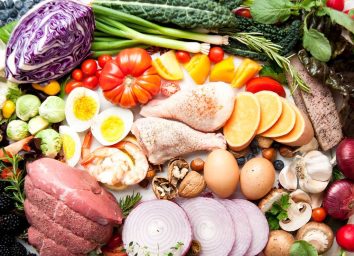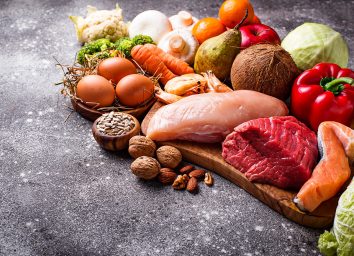Paleo Diet: These Are All the Foods You Should Eat
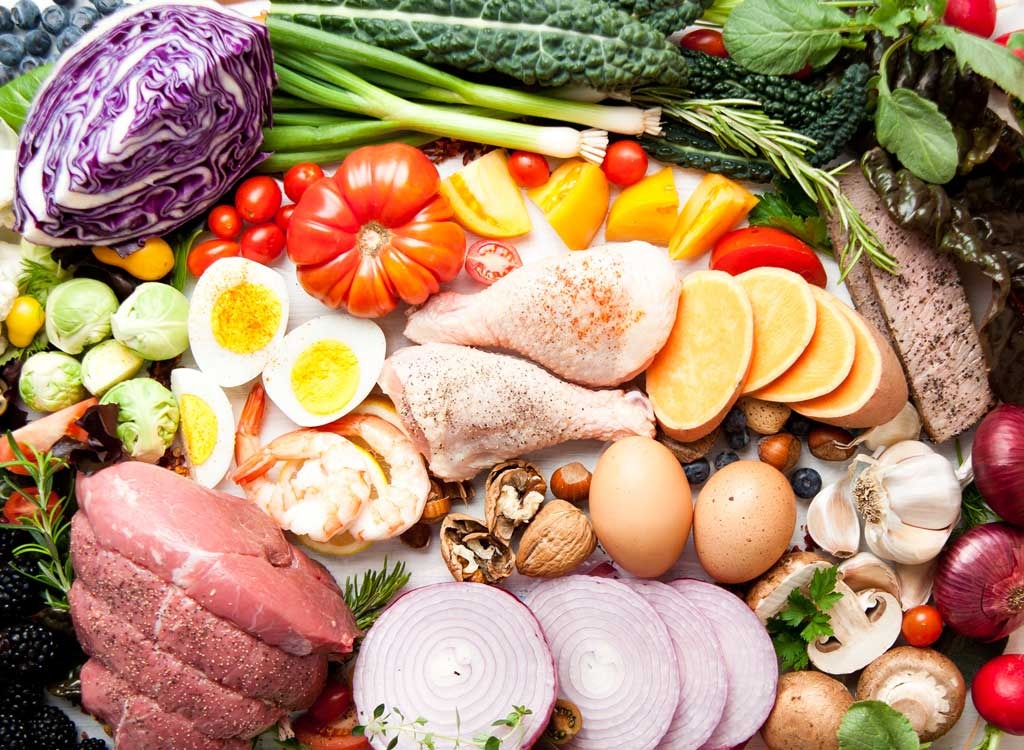
As with any diet, one of the primary struggles that comes with going paleo is figuring out what paleo diet foods you can and can't eat. One of the simplest ways to figure out whether a food is paleo-friendly is to ask yourself, "Could my ancestors hunt or gather it?" After all, this diet is modeled after the way people ate during the Paleolithic era (2.5 million to 11,000 years ago). So, it goes without saying that a bag of chips or a frozen pizza is off the table. But what about everything else?
According to certified nutritionist Paul Claybrook, the paleo diet has become increasingly popular not only because it can help to rapidly jumpstart weight loss, but also because it addresses a problematic emphasis in the American diet on processed foods (which are stripped of their nutritional value during processing).
"Processed foods set the stage for high blood sugar and a hormonal response that leaves the body wanting to store fat and burn away muscle (which of itself is a huge metabolism booster)," he says. "Compared to the 'average' diet, paleo is better suited to the human body because it is based on the presumed diet of humans prior to the development of farming. In other words, this diet is what people were made to thrive on."
But processed foods aren't the only thing to be avoided on paleo—dairy products, grains, beans and legumes, refined sugar, artificial sweeteners, some vegetable and industrial seed oils, and soy are not allowed, either. Whether you've already gone full caveman or are toying with the idea of trying it out, it's helpful to know exactly which paleo diet foods to have—and what foods are off-limits. Per the guidance of registered dietitians Lindsey Kane, Amanda A. Kostro Miller, Monica Auslander Moreno, and Andres Ayesta, here's a full list of paleo diet foods that you can add to your grocery cart.
Meat
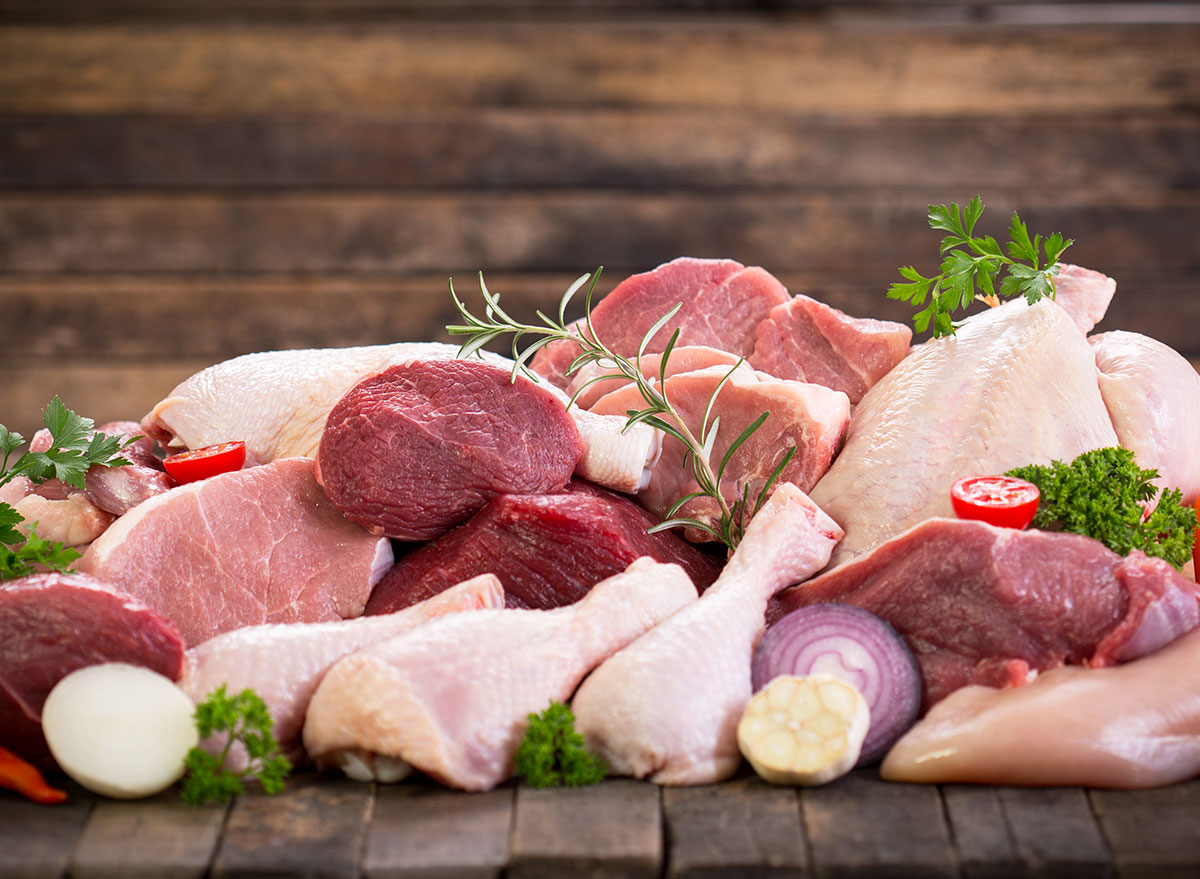
Pasture-raised or grass-fed meat and wild game is ideal, but all meat is paleo-friendly.
Paleo meat options include (but are not limited to):
- Beef
- Pork
- Poultry (chicken, turkey, duck, pheasant, quail, etc.)
- Game (venison, rabbit, etc.)
- Lamb
- Bison
Seafood
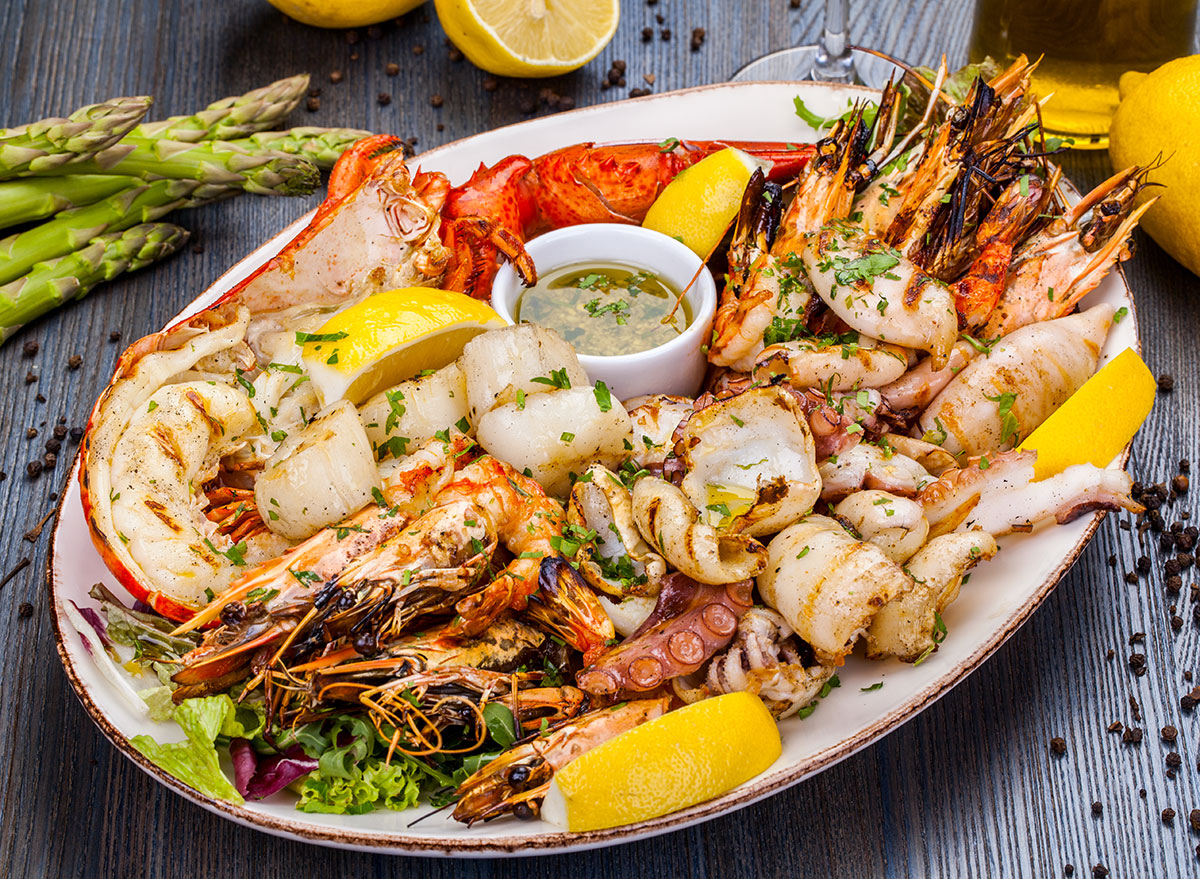
All seafood is allowed on the paleo diet, as long as it's not processed (like some canned crab meat, which contains preservatives.) Whenever possible, choose wild-caught over farmed-raised fish. It's best to limit consumption of larger predatory fish, such as shark and swordfish, as they are more likely to accumulate heavy metals (such as mercury.)
Paleo-friendly fish include (but are not limited to):
- Salmon
- Mackerel
- Tuna
- Haddock
- Tilapia
- Trout
- Cod
- Herring
- Bass
- Sardines
- Anchovies
- Grouper
- Lobster
- Clams
- Crab
- Shrimp
- Oysters
- Scallops
- Mussels
Fruits
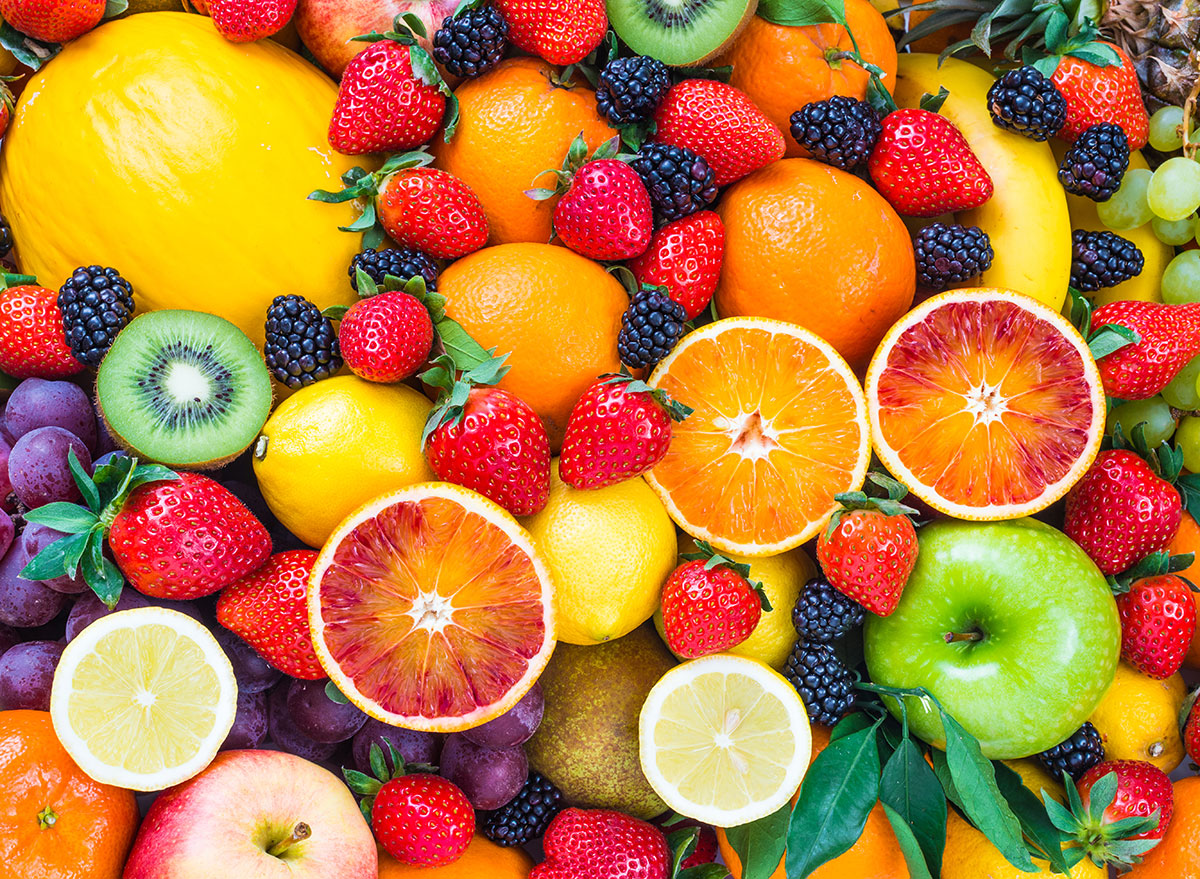
All kinds of fruit are acceptable on the paleo diet—as is dried fruit, provided there's no added sugar. Ideally, seek out organic fruit.
- Apples
- Citrus (orange, grapefruit, tangerine, lemon, lime)
- Berries
- Melons (watermelon, cantaloupe, honeydew)
- Peaches
- Nectarines
- Plums
- Bananas
- Pineapple
- Mango
- Papaya
- Raisins
- Plantains
- Grapes
- Tomatoes
- Apricots
- Figs
- Guava
- Lychee
- Dragonfruit
- Coconut
- Avocado
Vegetables
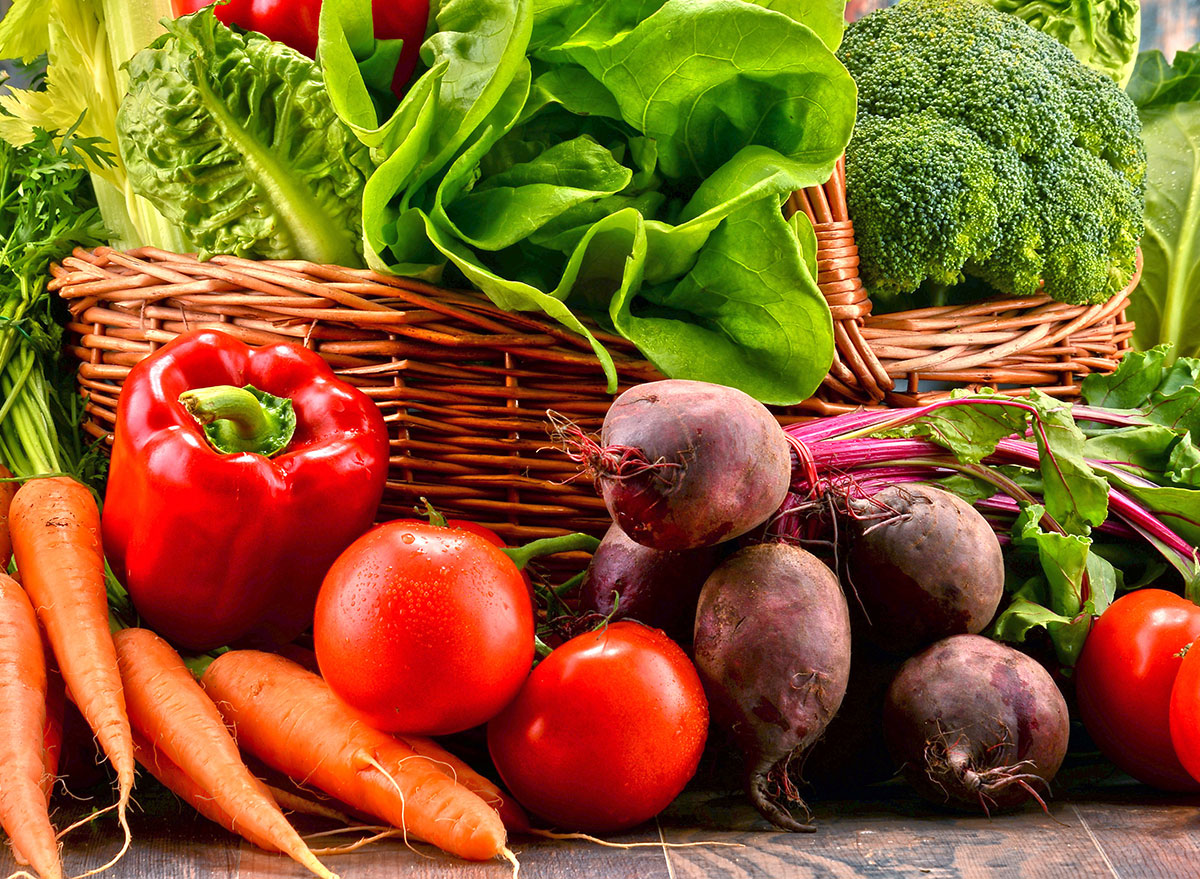
As with fruit, all vegetables are permitted on the paleo diet, but it's best to opt for organic and local varieties. Here are some examples of the many paleo-approved veggies:
Leafy greens
- Kale
- Spinach
- Arugula
- Radicchio
- Cabbage
- Collard greens
Tubers
- Potatoes
- Yams
- Jicama
Root vegetables
- Beets
- Parsnips
- Turnips
- Sweet potatoes
- Radishes
- Carrots
- Garlic
- Rutabaga
Squashes
- Butternut squash
- Acorn squash
- Spaghetti squash
- Pumpkin squash
- Kabocha squash
- Delicata squash
Cruciferous vegetables
- Broccoli
- Cauliflower
- Brussels sprouts
- Broccolini
- Broccoli rabe
Other
- Peppers
- Onions
- Celery
- Leeks
- Cucumbers
- Artichoke
- Asparagus
- Eggplant
Eggs
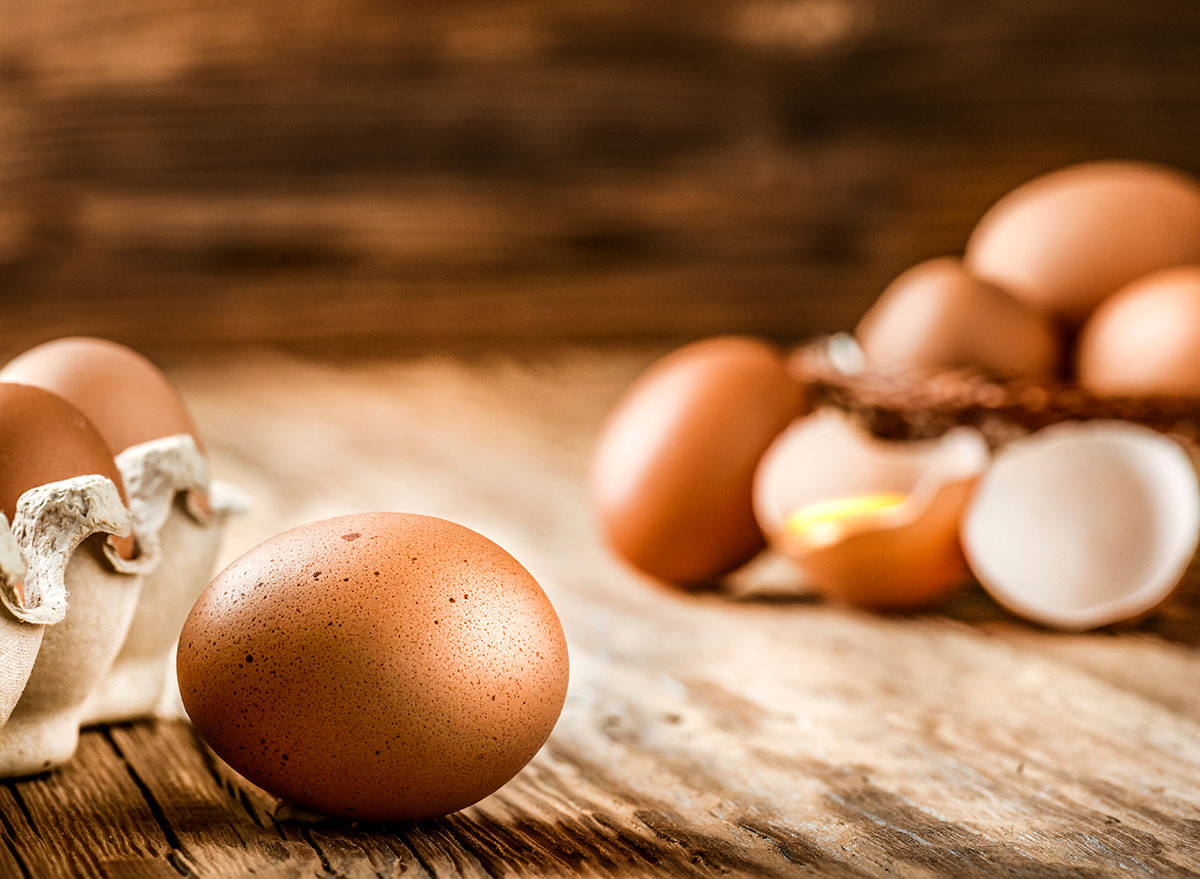
Not only are eggs allowed on the paleo diet, but they're considered a staple due to the fact that they're packed with high-quality protein, as well as a range of vitamins and minerals. Whenever possible, choose organic, free-range eggs, which tend to contain more omega-3 fatty acids.
Nuts & Seeds
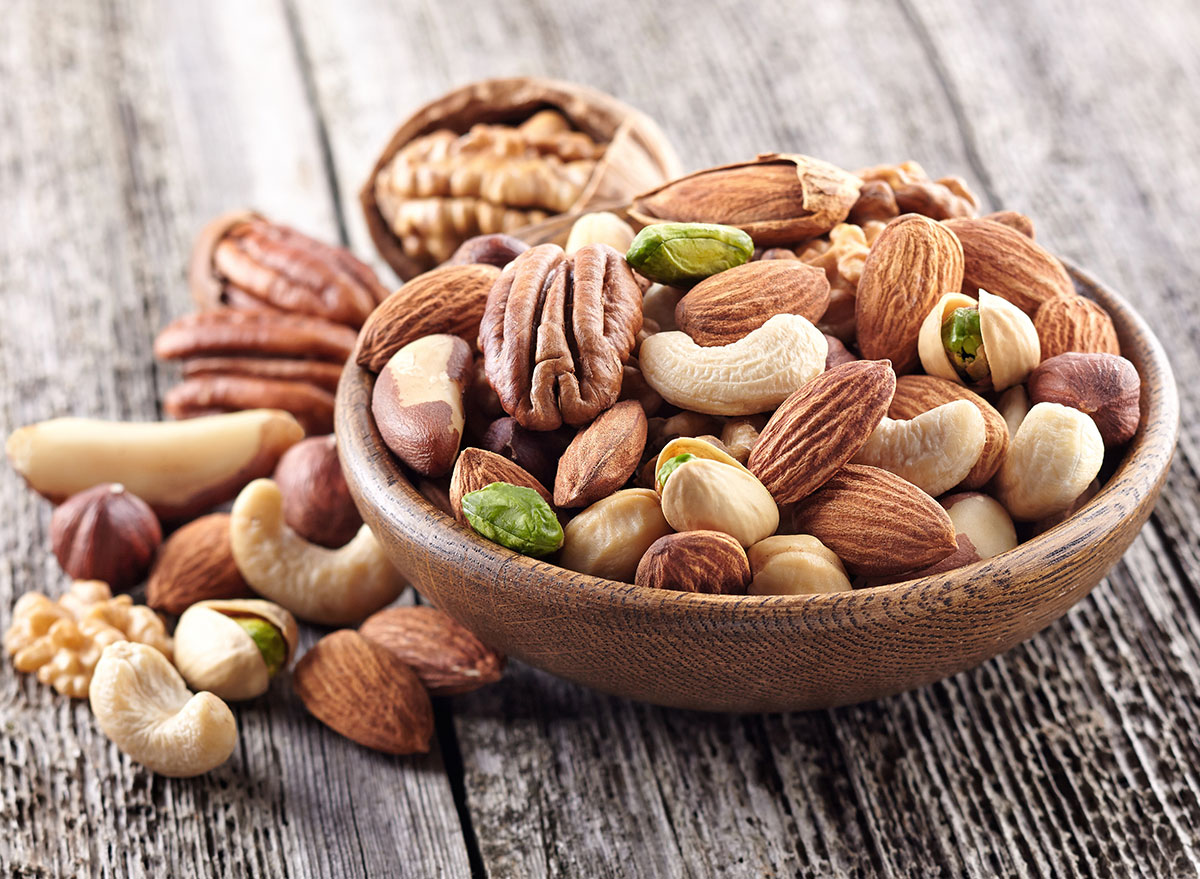
As long as there are no added sugars or oils, all seeds and nuts (as well as nut and seed butters) are permitted on the paleo diet—except peanuts, which are technically legumes. Some options include:
- Almonds
- Cashews
- Pistachios
- Walnuts
- Pecans
- Hazelnuts
- Macadamia nuts
- Pine nuts
- Flax seeds
- Sesame seeds
- Pumpkin seeds
- Sunflower seeds
Oils & Fats
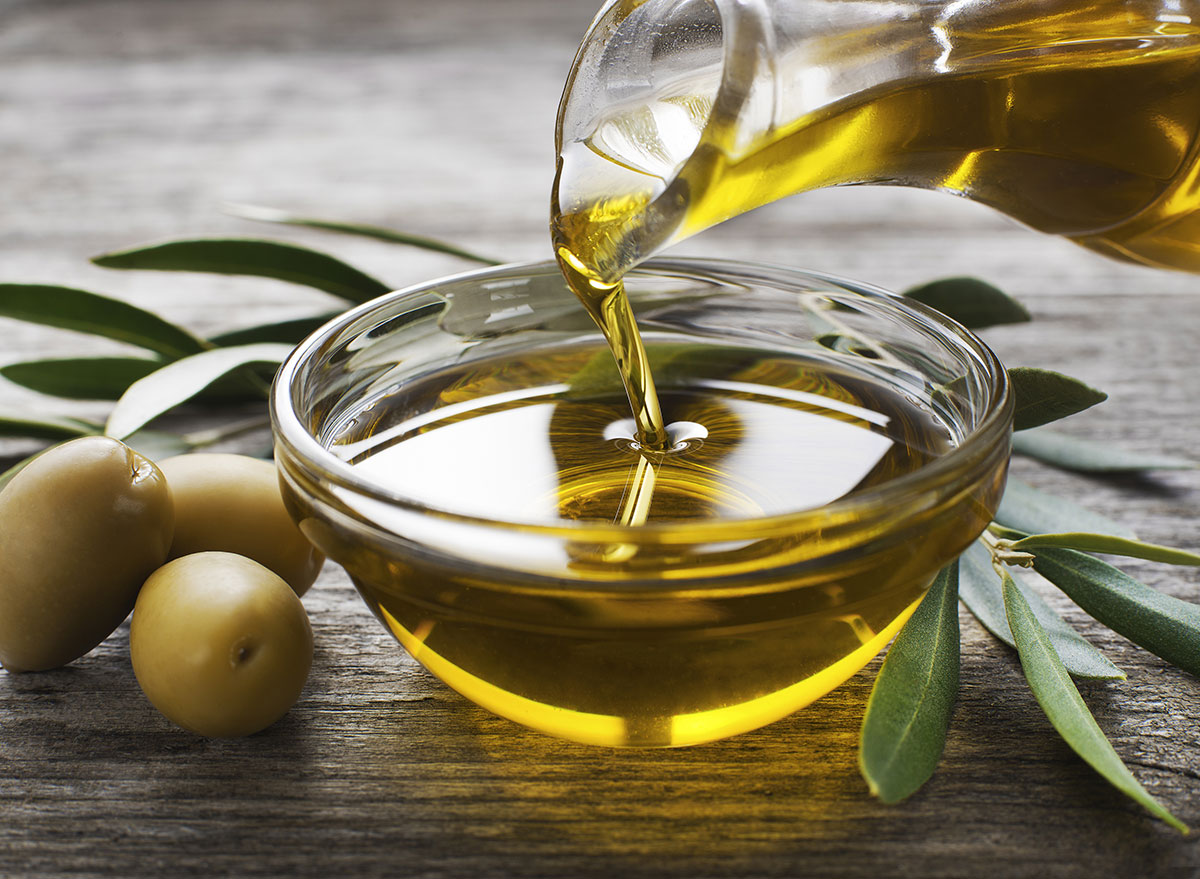
When cooking with oils, it's best to choose unrefined, cold-pressed varieties. While processed oils, such as canola oil, palm oil, vegetable oil, and corn oil are not paleo-friendly, there are many other plant-based oils and other options that are allowed. These include:
- Olive oil
- Avocado oil
- Coconut oil
- Ghee, or clarified butter
- Walnut oil
- Macadamia nut oil
- Flaxseed oil
- Sesame oil
- Animals fats (lard, tallow, etc.)
Sweeteners
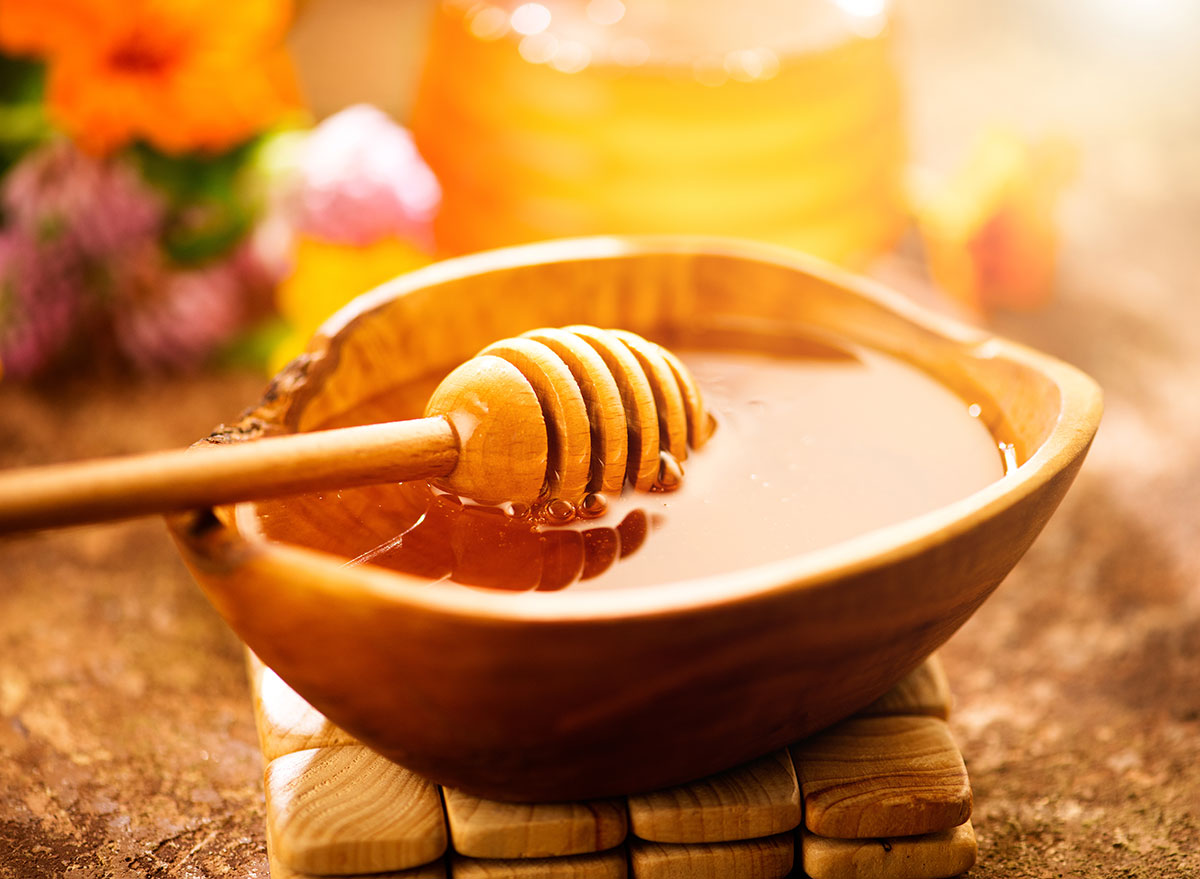
Refined sugar and artificial sweeteners may be off-limits, but some natural sweeteners do fit the paleo diet in moderation, such as:
- Pure maple syrup
- Honey
- Coconut sugar
- Pure stevia (powder or liquid)
- Date paste
Beverages

Paleo-approved drinks contain no added sugar or artificial sweeteners. Even the unsweetened nut milks you'll find at the grocery store often contain preservatives and other additives, but you can make your own homemade paleo-friendly versions. Examples of beverages you can enjoy on the paleo diet include:
- Water (sparkling or still)
- Black coffee (limit your consumption, or opt for decaf)
- Unsweetened herbal teas
- Unsweetened coconut water with no additives
- Fresh-pressed fruit or vegetable juice with no added sugar
Other
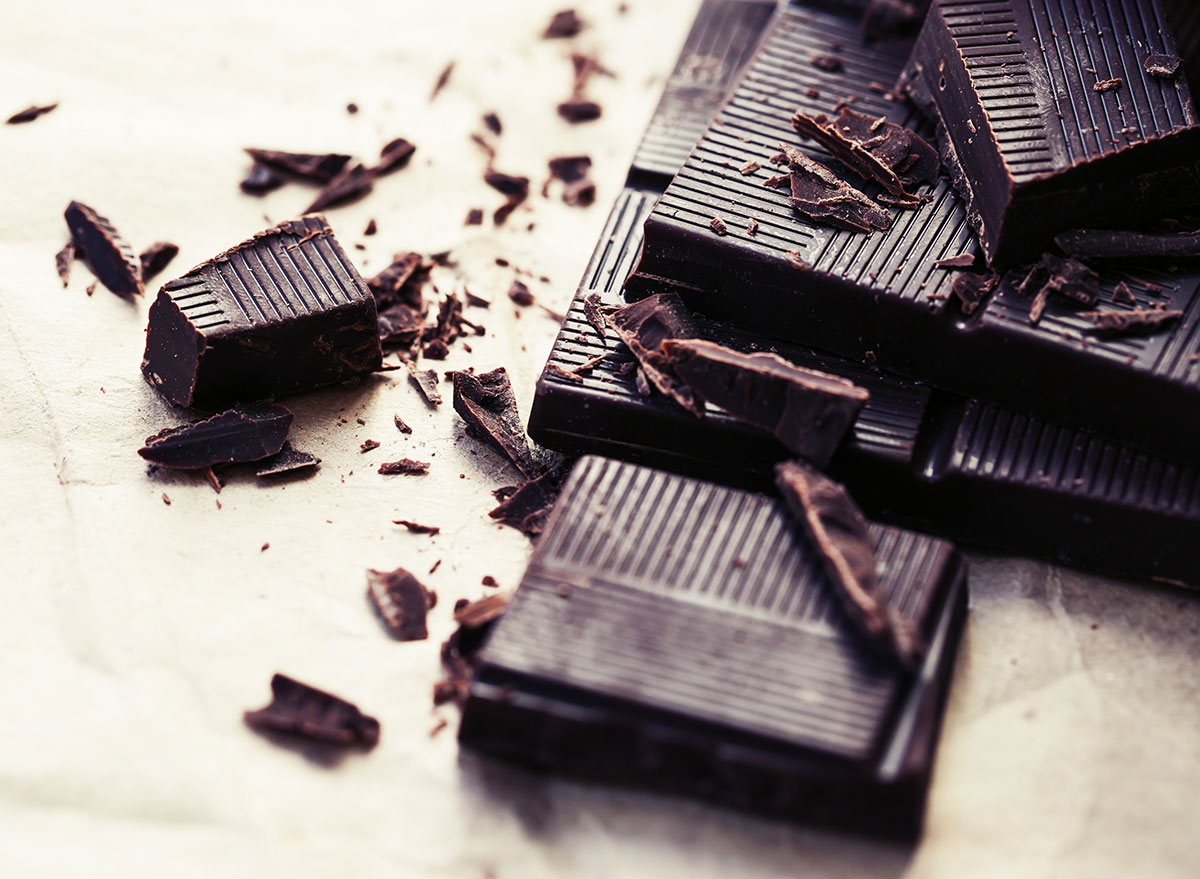
When your sweet tooth strikes, rejoice in the fact that dairy-free dark chocolate (at least 70% cacao) that's unsweetened or made with coconut sugar is permitted on the paleo diet.
Knowing which foods are allowed on the paleo diet empowers you to plan ahead when you go grocery shopping, as well as to fully reap the health benefits of this diet. While ditching the dairy, grains, and other non-paleo foods might be an adjustment, there are clearly still a wide variety of tasty, nutritious options to keep you satiated, while also allowing you to reach your health- or fitness-related goals. Now, the only thing left to do is put that list to work with some paleo-approved meal plans.
